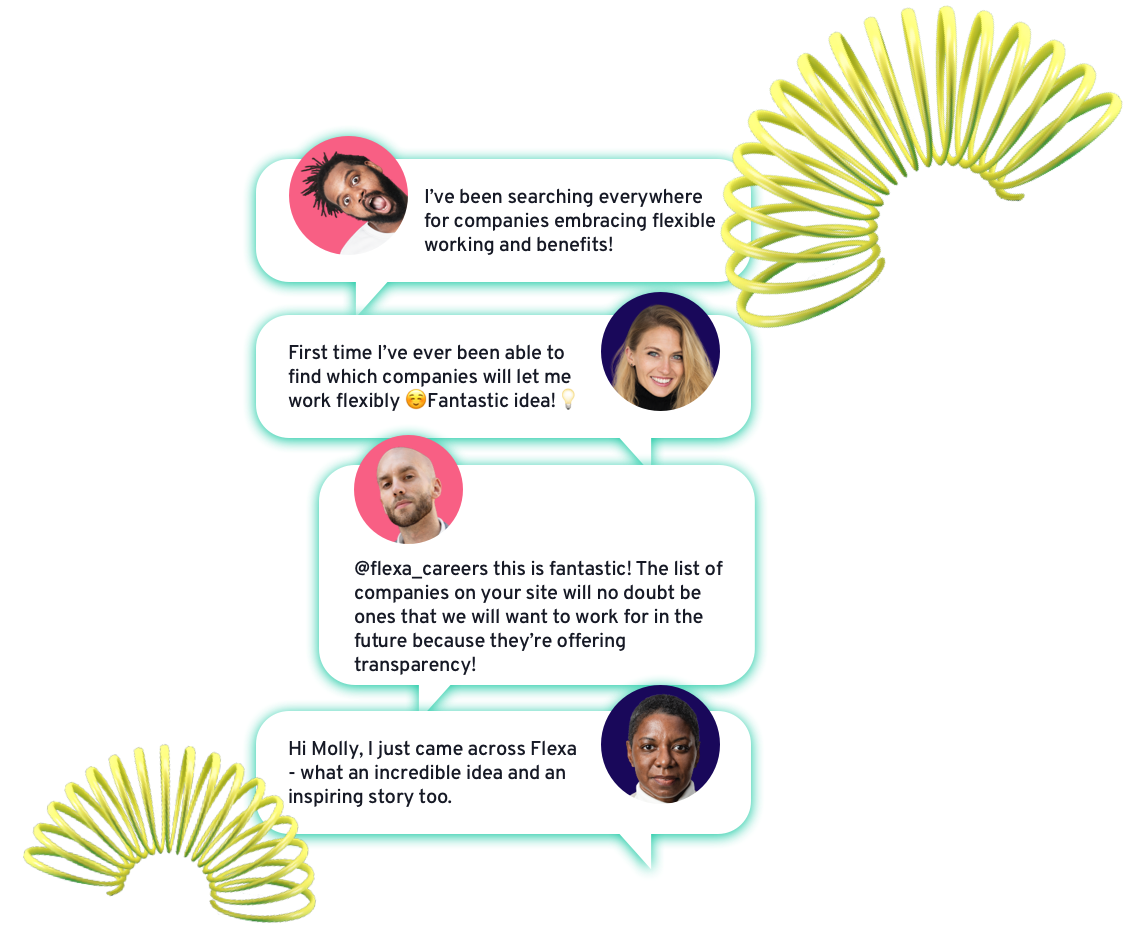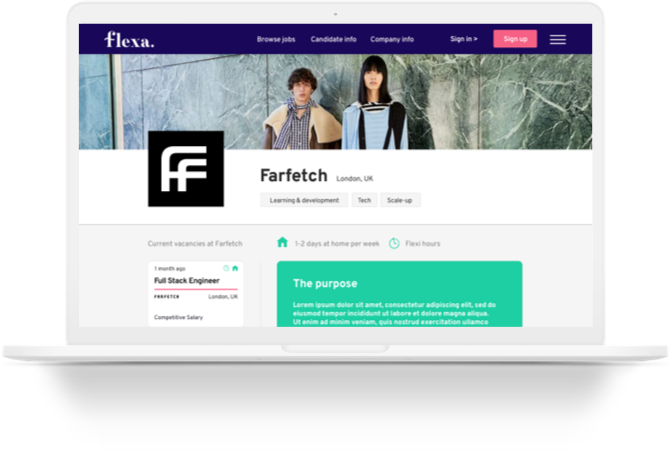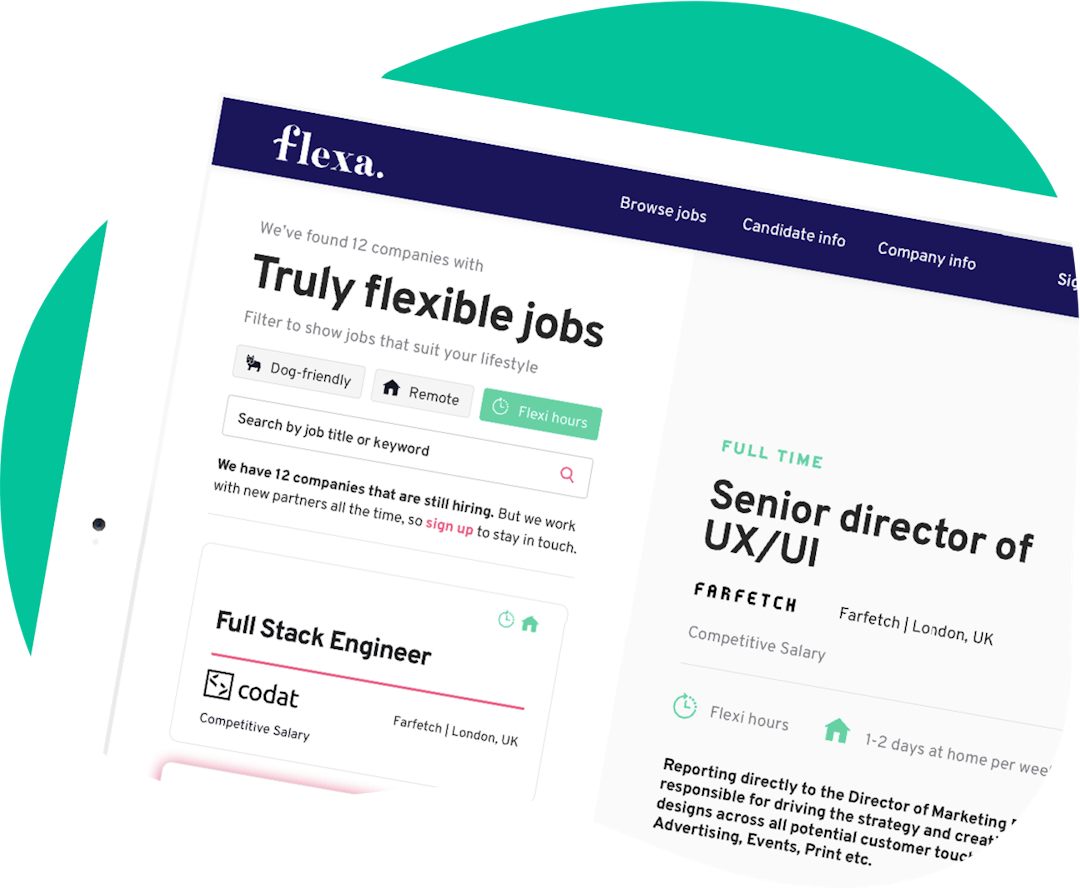Improve Employer Visibility With Flexible Working
26th Mar 2021

Struggling to hire great candidates? We discuss four ways to improve your hiring pipeline.
68% of companies aren't outwardly publicising their flexibility. When it's the number one candidate demand, this lack of discoverability will be impacting your hiring pipeline. We explain how to make sure you're maximising your appeal in four easy ways.
Flexible companies have a huge advantage when it comes to talent acquisition, yet very few companies use their flexibility as a talent acquisition tool, instead choosing to reserve it as an employee benefit.
Want to find out how flexible you are versus your competitors, and what you should be focusing on to improve your employer brand? We’ve developed a quiz to show you how you stack up against the market, with insights on your strengths, opportunities, and weaknesses. Give it a go! It only takes 3 minutes.
Anyway...
Why flexibility should be in your talent acquisition strategy
71% of people are more likely to apply to a role that directly mentions flexibility according to a YouGov survey commissioned in partnership with Flexa, and 33% of people will turn down a role if it doesn’t offer flexible working according to Workplace Insight. So, not leading with flexible working is a huge missed opportunity for flexible companies, especially now as millions of people are wondering whether their company will make a commitment to flexibility, and are looking for new jobs if they won’t be able to work flexibly.
Utilise flexible working beyond an employee benefit?
We break down four ways that flexible companies can instantly improve their employer brand and use flexibility as a talent acquisition tool that will mean that they trump their competitors when it comes to hiring.
1. Think about the secondary job search

The way that candidates look for a job is changing. Let’s use a digital marketing candidate as an example. In 2019, they would have applied to all roles that matched their skillset and blindly proceeded through interviews with no understanding of whether the company was right for them.
Fast forward to 2021, and a secondary search has emerged. This digital marketing candidate will now search for digital marketing roles, but also for companies that they like the sound of, for companies that offer the ways of working that they want, and maybe even those that match their values.
Companies that want to stand out need to think about the secondary job search. But how?
Well, candidates are using social media as a way to identify companies that match what they want, so think about using your social accounts as a way to show what life is like at your company.
Here are some great examples from Unleashed and 11:FS.
In addition, think about your careers page as the source of information that candidates will use to understand what life is like at your company. Don’t just rely on a Workable or Lever page with your open roles, consider creating an in-depth careers page like Juro here or, if you don’t have time for that, Flexa creates one for you and drives traffic to it, just like Farfetch’s here.

2. Tell your employee stories

People love hearing about other people, and the best way for prospective candidates to find out about your culture is by understanding who already works there.
Again, we suggest utilising social channels to create video and blog content that interested candidates can peruse, and for the wider social network to discover and realise what a great place you are to work at!
Some examples we think are worth taking note of are Farfetch’s blog about one of their employees finally finding a job that enables her to truly manage motherhood and a career, as well as Learnerbly’s light hearted approach to showcasing their culture.
3. Make your JDs more human

For many companies, the first time that a candidate ever comes across your company is through a job description… but, as a general rule, job descriptions are totally uninspiring.
Companies with well-written job descriptions get up to 10x more applications (yes, really!). We wrote an in-depth blog about it here, but our three key takeaways are:
- Be sure to tell the candidate why they should want to work for you, as well as what you want from them
- Break experience down into “must have” and “nice to have”
- Give your words personality and don’t be afraid to be fun
In fact, we’ve made a job description checklist to ensure that hiring managers have got their job description writing down to a fine art. If you’d like it, here it is.
4. Make it easy to be discovered for flexibility

It’s great to maintain an awesome careers page for those candidates that have discovered you, but what about those who don’t know yet that you’re a brilliant employer that they want to work for? The forces really have to align for people to discover you when they’re looking for flexible working.
Well, that’s why we created Flexa.
We won’t bore you with the story now (you can read it here if you’re interested), but we started because of an inability to find out which companies offered flexible working. On the one side, we saw that employers were missing out on being discovered for their brilliant working environments. On the candidate side, we saw that those who wanted and needed flexibility were struggling to find the right companies for them.
We only work with truly flexible companies to instantly boost employer brand, improve Diversity & Inclusion in hiring, and help companies to hire efficiently and effectively in a changing hiring landscape. Over 60,000 candidates visit our website every month, and we grow by 3,000 registered candidates every week.
If you’d like to find out how your flexibility stacks up against the market, and which bits you should be shouting about, then take our 3 minute quiz here. It’s free and will give you loads of insights around where you stand out and where your areas of opportunity lie.